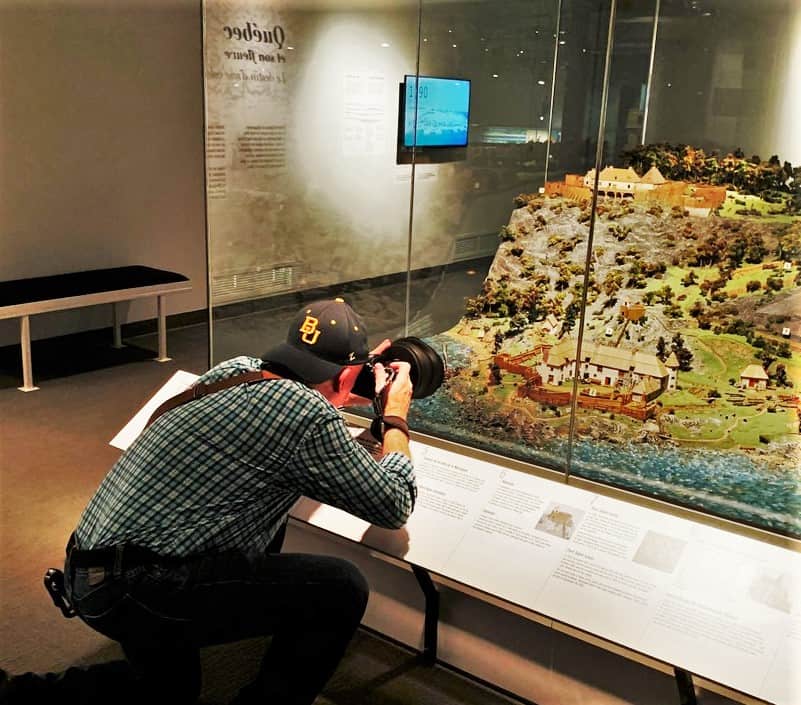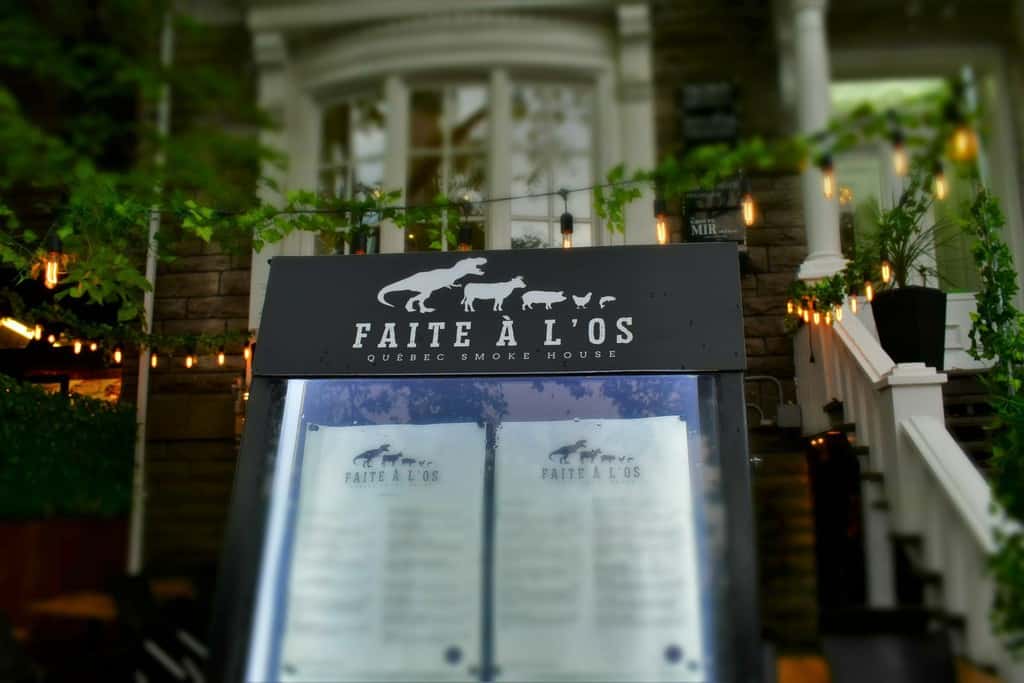By now, you probably realize that we truly enjoy visiting museums. There are so many varieties, but each offers the unique opportunity to learn. Having a chance to expand our horizons is intriguing, and we find that each destination adds to our overall understanding of the world around us. Quebec City had tempted us with a variety of history museums that focused on the military action that forever changed the landscape of the city. Now that those had been thoroughly explored, we turned our attention to the Museum of Civilization. Here we would explore the most popular museum in Quebec City, as well as showing you our process for capturing history at the places we visit.
We want to thank Quebec City Tourism and the Musée de la Civilasation for hosting our visit. Rest assured all opinions are our own.
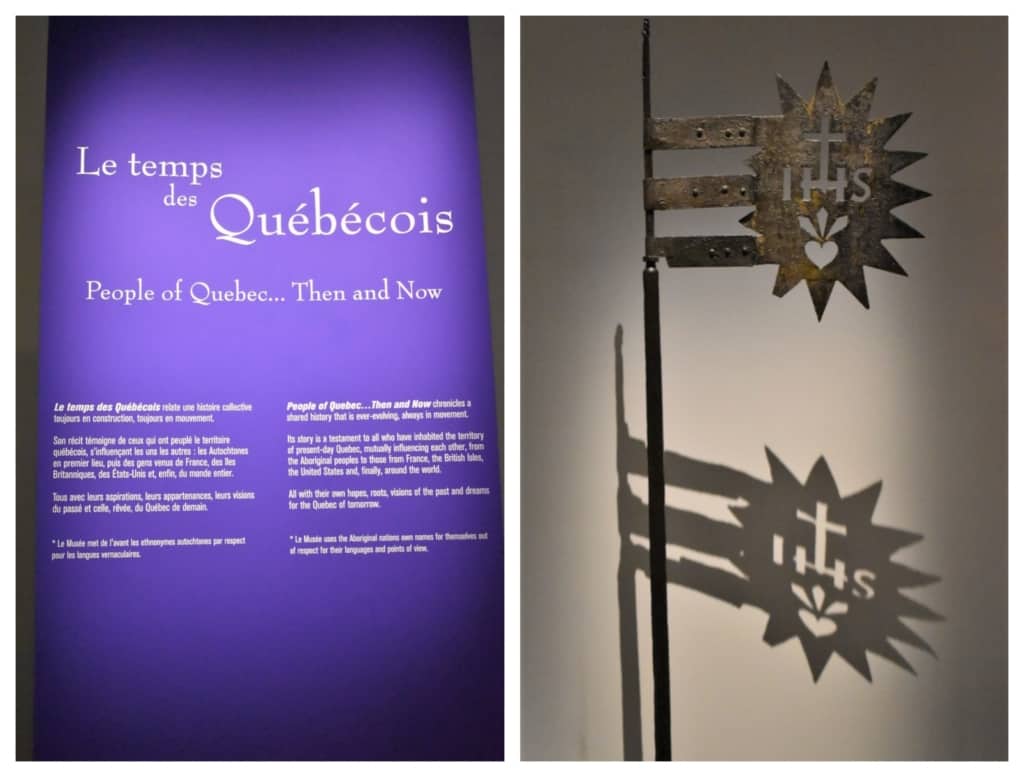
Quebec History
With over 35 years in existence, the Quebec City Museum of Civilization has assembled a good cross-section of historical exhibits. The spaces are filled with dioramas, static displays, artifacts, and rotating exhibits. As is the case throughout the Quebec region, all of the signage was posted in French and English. This was quite helpful for a couple of Americans who are only fluent in one language. As we passed through the first section of the museum, we found items on display that established a starting timeline for Canada’s oldest city. We were impressed at the way the staff had displayed the artifacts so that they grabbed visitor’s attention.
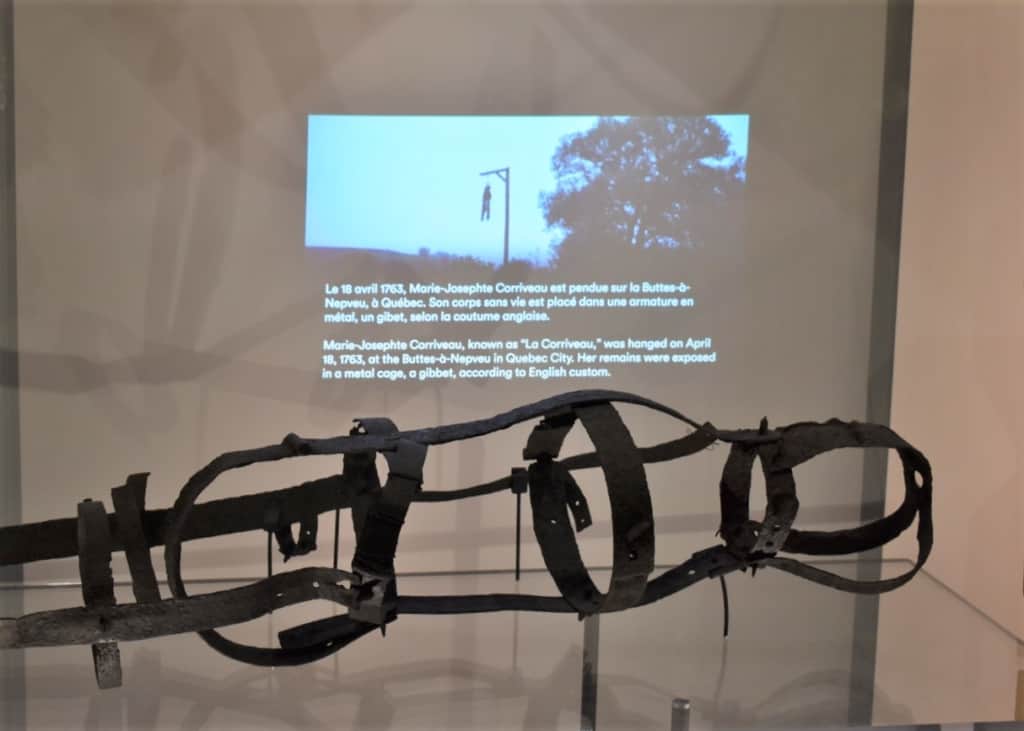
Ghostly Connection
One of the things we find fascinating is being able to find connections between all of the experiences we have during a visit to a new destination. Throughout Quebec City, we were finding these types of overlaps. During a previous night’s ghost walk, we had heard tales of people who had been executed in long-ago days. Our ghoulish guide had even referred to the “gibbet” that was used for such gruesome activities. At the Museum of Civilization, we were able to witness one for ourselves.
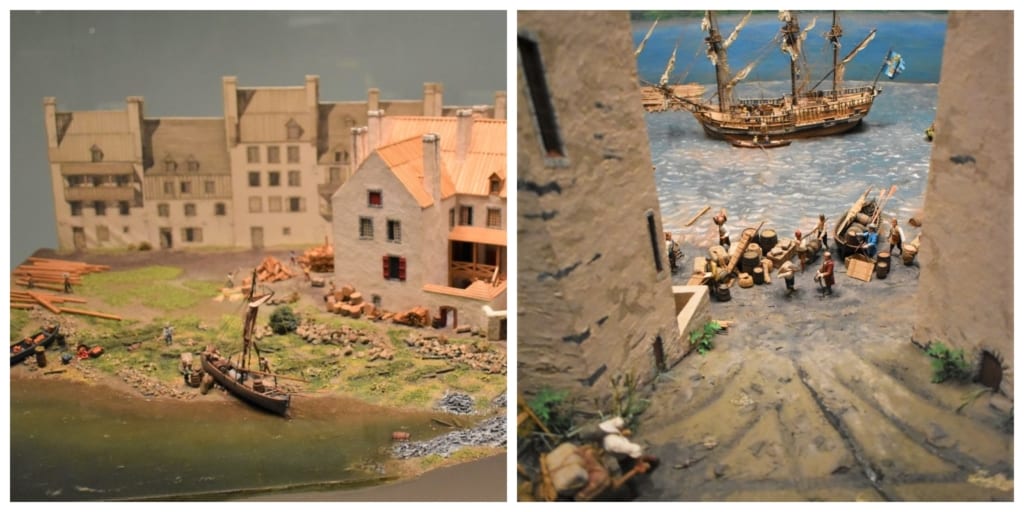
Early Life
A favorite of ours is dioramas. These 3-dimensional scenes help paint a picture of life before photographs. The one above highlights the early days of the town, when the majority of the focus was the St. Lawrence River and the sustenance it provided. Seeing all of the detail that has been poured into the work makes us appreciate the time required. Walking around the display, you can find yourself capturing history from various angles.
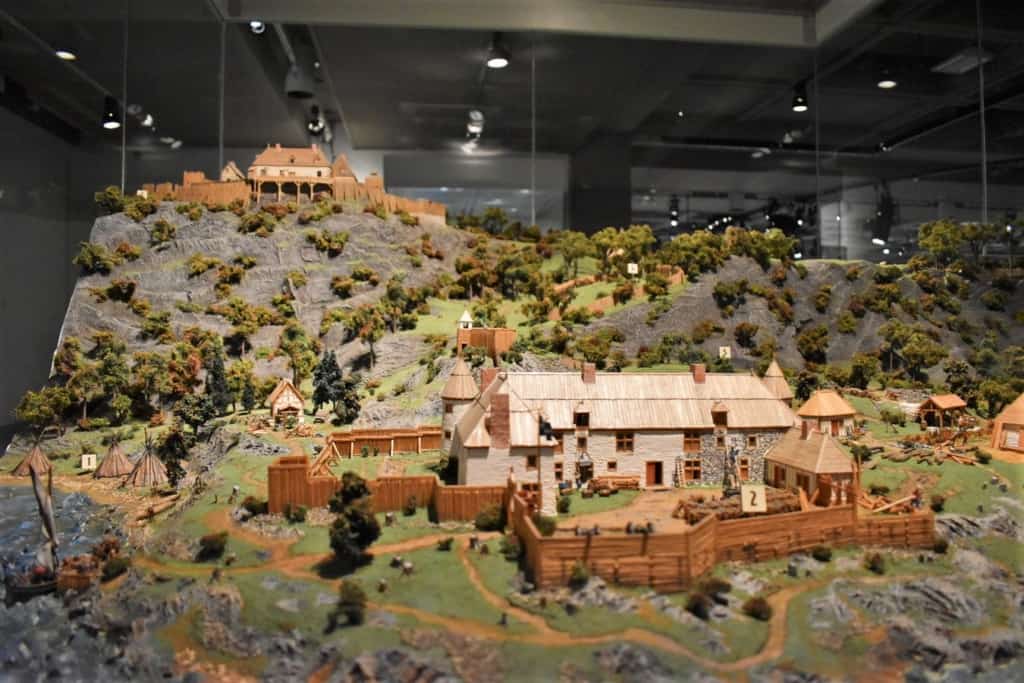
Detailed Dioramas
Moving to another diorama, we found a scene that shows the growing city. By this point in time, Upper Town and Lower Town were both developing. The indigenous people were closely tied to the future of the town’s residents and assisted in their development. As the town grew into a city, the two sections would merge into one continuous metropolis. Seeing how it looked in the early days is much easier to grasp with the aid of these models.
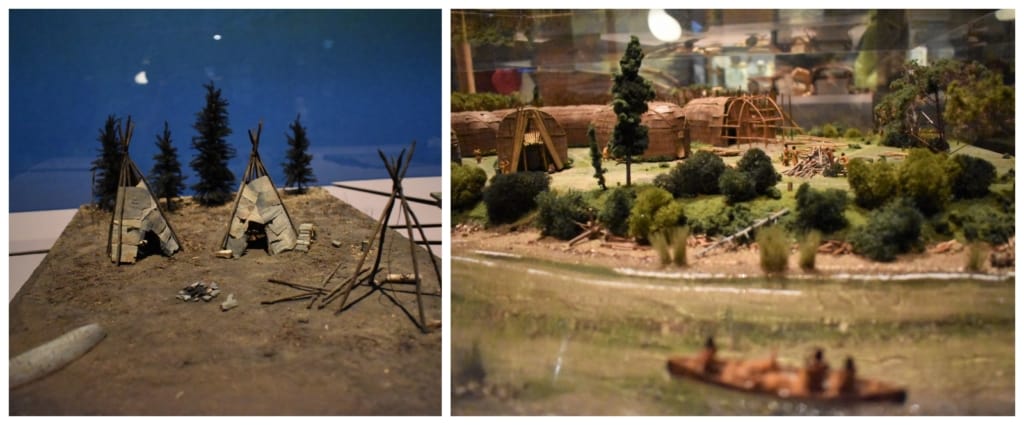
First People
We were pleased to find that the dioramas didn’t end with just showing Quebec City as it matured. In another exhibit area, we discovered models of the villages that represented some of the native people of this territory. Eleven aboriginal tribes call Quebec home. The “First Nations” are still held in high esteem in this region of Canada. Throughout our visit, we would hear references to some of the tribes. We had even stumbled upon the annual KWE! event on our first night of exploring Quebec City. This yearly gathering is a chance for the public to learn firsthand about the eleven Indigenous Nations.
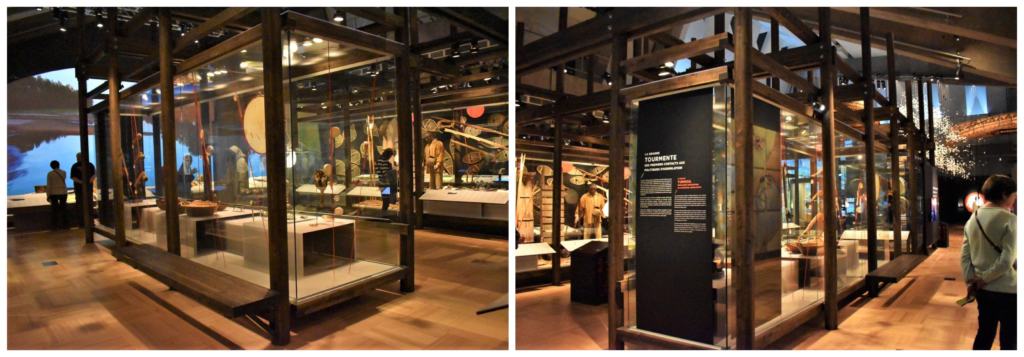
This is “Our Story”
What happens when a museum works closely with the eleven aboriginal nations that reside in the region? The result is an amazing new permanent exhibit about the native people of this land. The story begins 12,500 years ago and winds through time. It focuses attention on the struggle to merge the Indigenous nations and the growing colony. The Museum of Civilization does not shy away from capturing history as it happened. There is plenty of information about the strife that occurred between the tribes and the colonists during the 400 years of colonialism.
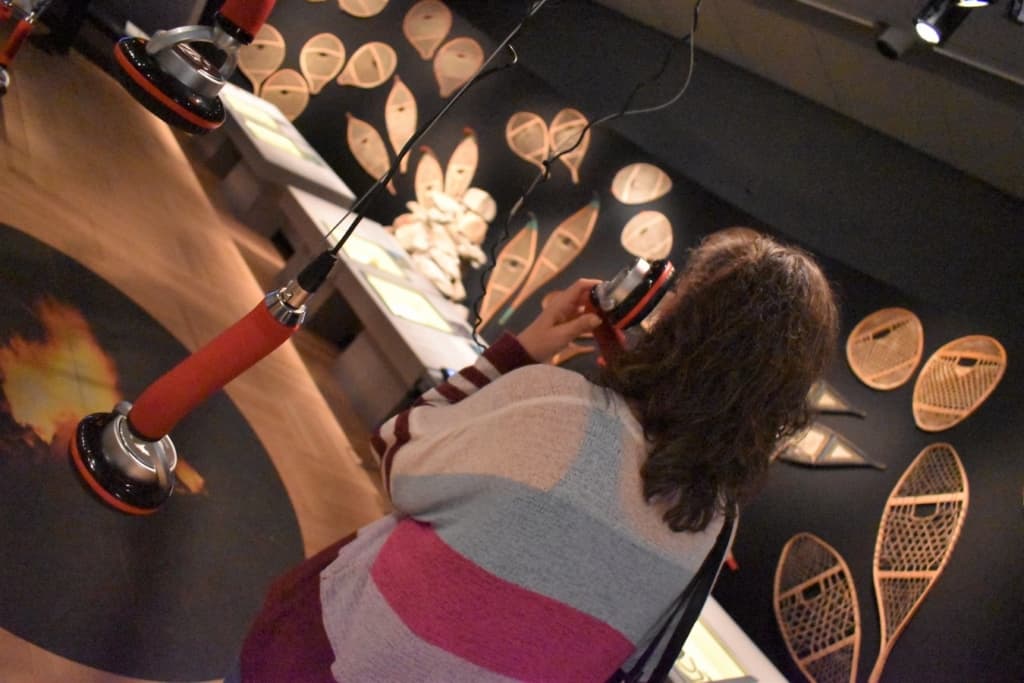
Capturing History
To help visitors gain a thorough understanding, the museum incorporates a variety of tools and technology. Audio presentations allow guests to hear the stories of the people of the land. Video screens show details that help describe the changes over time. Static displays show how life has changed for the Indigenous People of this land. The exhibit leads visitors to the discovery of what it means to be one of the native peoples in today’s world. How has life changed and how have they been able to retain their cultural history and traditions. This exhibit alone can take the better part of a day to digest.
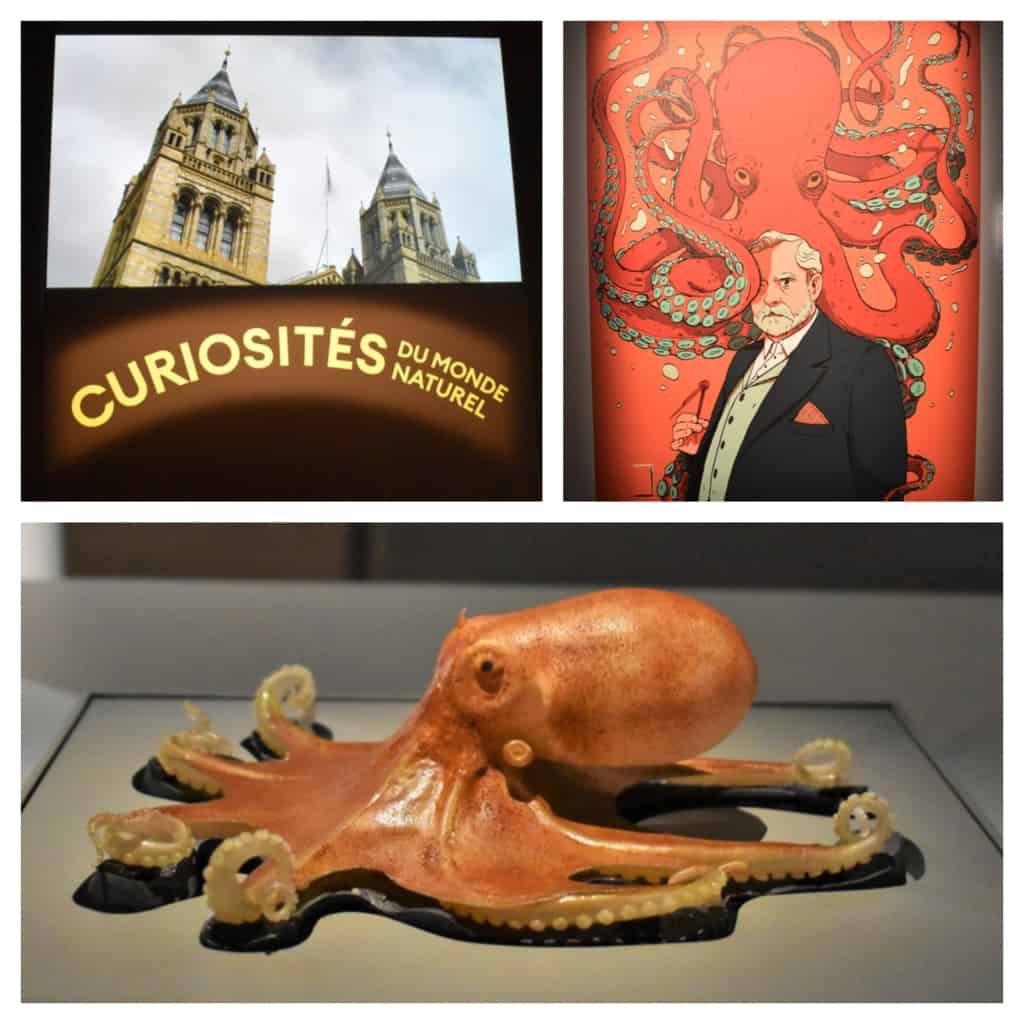
Bringing the World to Quebec City
One of the things that most impressed us is the way that the Museum of Civilization can seamlessly incorporate rotating exhibits. In many museums, these “traveling displays” are often segregated from the permanent exhibits. That is not the case here, and infrequent visitors may be surprised when they return to find so many new displays. During our visit, there were three different temporary exhibits taking place throughout the museum. As we strolled through the spaces, we never realized that these collections were not part of the permanent collection.
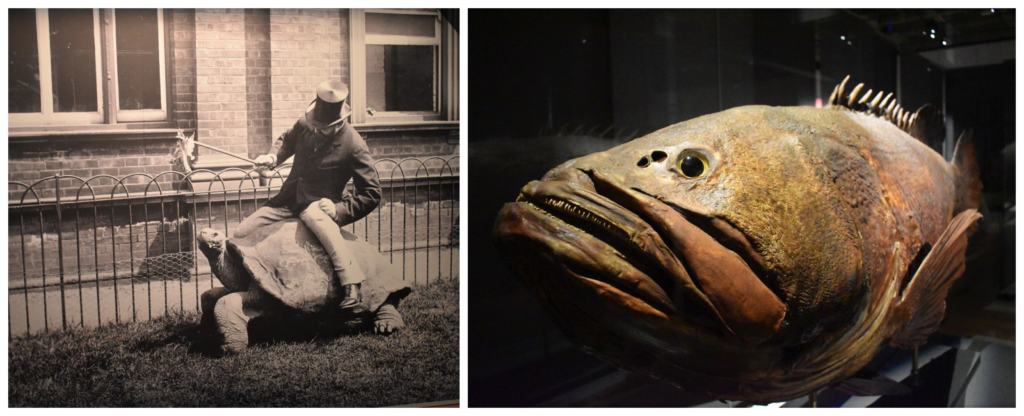
Curiosities of the Natural World
One of the rotating exhibits was “Curiosities of the World”. This collection of 200 artifacts was on loan from the Natural History Museum in London. It offered us a glimpse at some real oddities and some rare items. Besides an assortment of mummified “monsters”, they also had the skeleton of a saber-toothed tiger. There were some rare and unusual gems and minerals, as well as a page from Charles Darwin’s original manuscript. It allowed us an opportunity to see items that would otherwise probably never had a chance to witness firsthand.
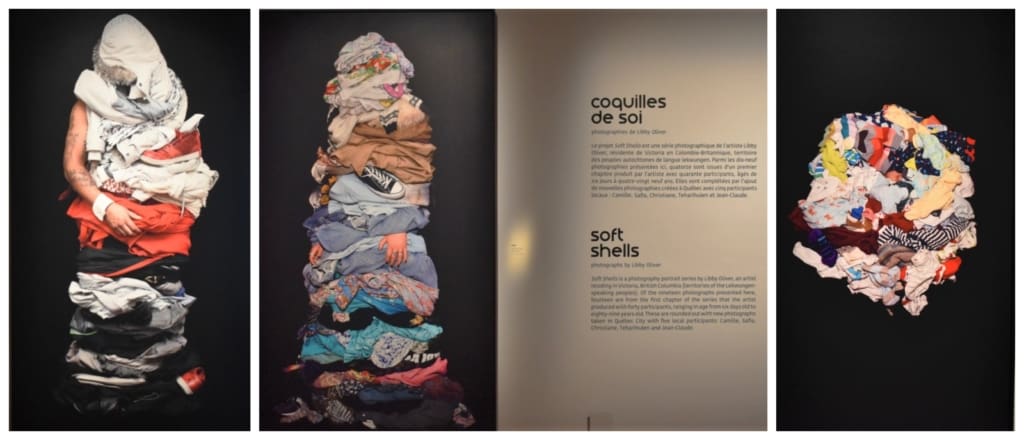
Soft Shells
A smaller, yet just as intriguing, exhibit was titled “Soft Shells”. A collection of photographs, from Libby Oliver, summed up people’s lives from the aspect of their wardrobes. This unusual look at daily life makes the viewer think. The images ranged from babies to adults, in all walks of life. Can you imagine if you had been asked to assemble your wardrobe for a photo like these? What would the image tell the world about you?
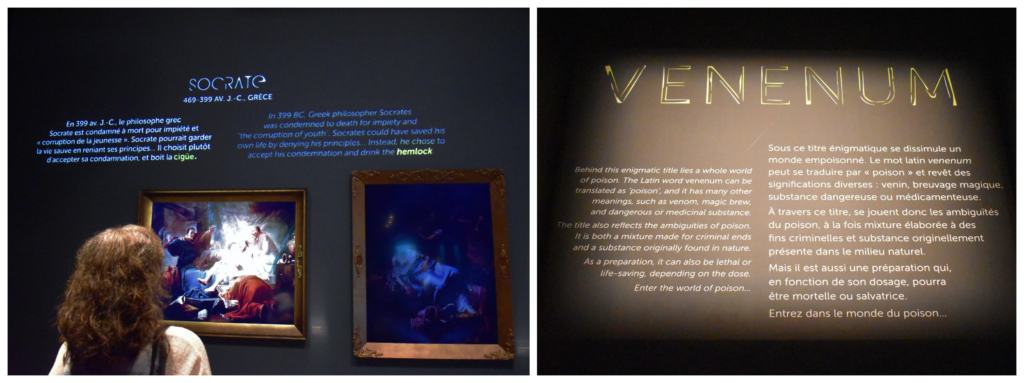
Venenum
In another gallery, we discovered the temporary exhibit on venom and poisons. Most of us have a fear of poisons, yet we can be fascinated by the stories of their use. We can still remember the story of Socrates, who poisoned himself with hemlock. This was done in response to being found guilty of heresy and was a self-inflicted punishment. While this is one of the more notable poisons, the Museum of Civilization’s exhibit pointed out many that were less commonly publicized. One of the fascinating parts of the display was the use of a time-lapse video. Guests would watch as separate panels would appear, which helped tell a story about a specific poison or venom.
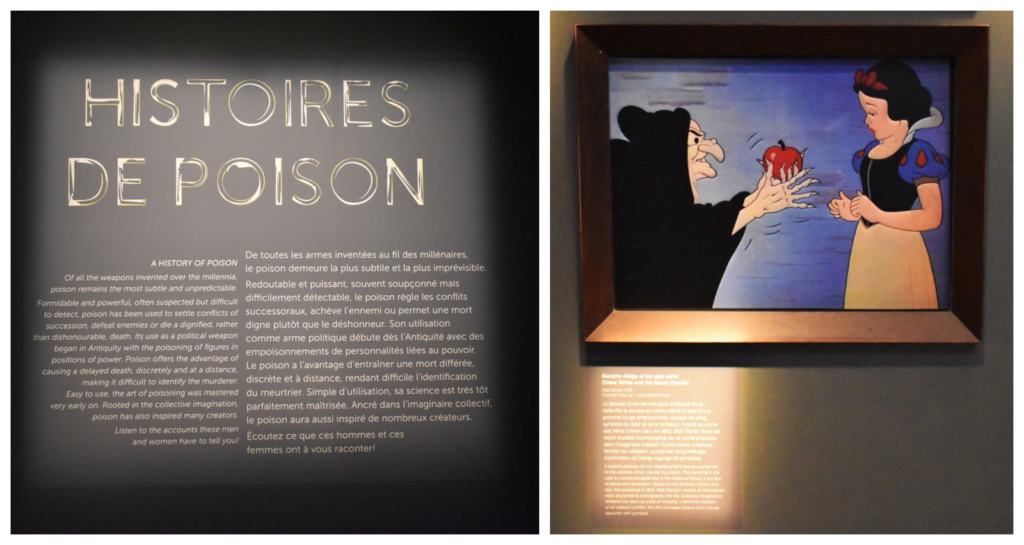
A Poisonous World
Another well-known example, yet not as fatal, was the story of Snow White. We all remember the evil witch disguising herself as an old woman, who delivered the coma-inducing apple. Even as children, we are instructed in the potential destructive power of poisons and venom. As we made our way through the exhibit, we found that it included a mix of video, static, and live displays. For the live ones, some tanks held jellyfish, lionfish, and even poison dart frogs. It’s hard to fathom that creatures so beautiful can also be so potentially deadly.
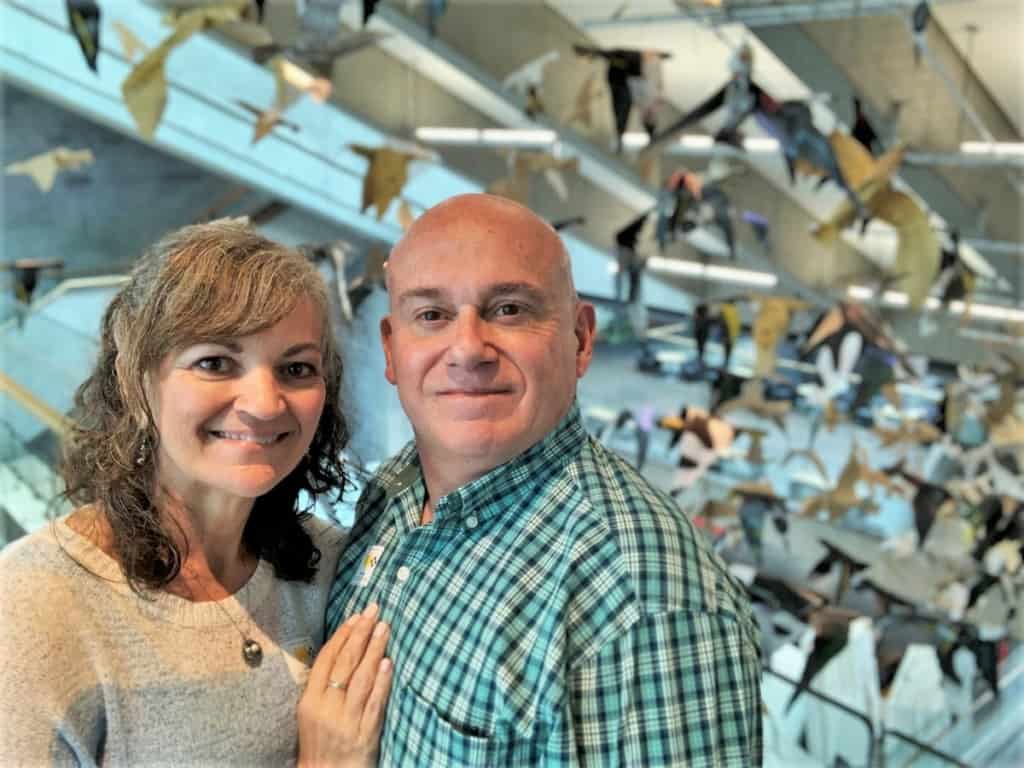
Successfully Capturing History
Our visit to the Museum of Civilization occupied about half of a day. It could easily have been expanded to a whole day, but you know how we like to cram lots of stops in our schedule. While it required us to skim some of the exhibits, we were still able to complete our goal of capturing history specific to Quebec City. A city that has existed for over 400 years holds too much history to be gathered in one collection. Even though that may be the case, the museum does a good job of helping visitors better understand the past, as well as the city’s direction forward. We loved their use of permanent and temporary exhibits to paint a picture of life in Quebec City.


